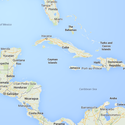-
About
- About Listly
- Community & Support
- Howto
- Chrome Extension
- Bookmarklet
- WordPress Plugin
- Listly Premium
- Privacy
- Terms
- DMCA Copyright
- © 2010-2025 Boomy Labs

 List Builder
List Builder
Listly by List Builder
cruise ship, things to do,Tallinn, Estonia, boostvacations.com, day trips, offshore trip
Tallinn occupies an area of 159.2 km 2 (61.5 sq mi) and has a population of 431,184. It is situated on the northern coast of the country, on the shore of the Gulf of Finland, 80 km (50 mi) south of Helsinki, east of Stockholm and west of Saint Petersburg.
The Seaplane Harbour ( Estonian: Lennusadam) is a maritime museum in Tallinn, Estonia, opened in spring 2012. The museum is part of the Estonian Maritime Museum. The museum is located in the Tallinn aeroplane harbour in a building originally constructed as a hangar for seaplanes in the area of Peter the Great's Naval Fortress.
Toompea (from German: Domberg, "Cathedral Hill") is a limestone hill in the central part of the city of Tallinn, the capital of Estonia. The hill is an oblong tableland, which measures about 400 by 250 metres, has an area of 7 hectares (17 acres) and is about 20-30 metres higher than the surrounding areas.
Although the city power worked in the Town Hall until 1970, it still holds the role of a representational building of a city administration and welcomes visitors as a concert venue and a museum, where you can get to know the centuries-long historical and architectural value of the Tallinn Town Hall.
The Alexander Nevsky Cathedral is an orthodox cathedral in the Tallinn Old Town, Estonia. It was built to a design by Mikhail Preobrazhensky in a typical Russian Revival style between 1894 and 1900, during the period when the country was part of the Russian Empire.
Kadriorg is a subdistrict ( Estonian: asum) in the district of Kesklinn (Midtown), Tallinn, the capital of Estonia. It has a population of 3,681 (As of 1 June 2011). Kadriorg means "Catherine's Valley" in Estonian, this derives from the Catherinethal, a Baroque palace of Catherine I of Russia.
Kumu is an abbreviation of the Estonian "Kunstimuuseum" (art museum). The designer was a Finnish architect, Pekka Vapaavuori, who won the competition in 1994. It was constructed from 2003 to 2006. The building is successfully positioned in the limestone slope of Lasnamäe Hill, and therefore, despite its size, is in harmony with the intimacy of the ancient Kadriorg Park.
The first wall around Tallinn was ordered to be constructed by Margaret Sambiria in 1265 and for that reason, it was known as the Margaret Wall. This wall was less than 5-metre-high (16 ft) and about 1.5-metre-thick (4.9 ft) at its base. Since that time it has been enlarged and strengthened.
The Tallinn TV Tower ( Tallinna teletorn) is a free-standing structure with an observation deck, built to provide better telecommunication services for the 1980 Moscow Summer Olympics regatta event (see Sailing at the 1980 Summer Olympics). It is located near the suburb Pirita, six km north-east of the Tallinn city center.
Pirita occupies a relatively big area, but compared to other districts of Tallinn its population of 16,636 (as of1 Jan 2012) is relatively small. It mostly consists of private houses, instead of the large blocks of flats typical of some other districts of Tallinn, such as Lasnamäe and Mustamäe.
Tue-Sun 10.30-18.00. Last admission 17.30 Nov-FebTue-Sun 10.00-17.30. Last admission 17.00 The Museum is closed on Mondays and public holidays.
Opera House The Jugend-classicistic theatre building designed by Finnish architects Armas Lindgren and Wivi Lönn was the largest building in the early 20th century Tallinn. One side of the two-wing building was intended for a theatre and the other for a concert hall. This is so also today.
Estonian National Opera is the national opera company of Estonia. The company is based at the Estonia Theatre in Tallinn. The theatre has had several names throughout its existence. The latest one being "The Estonian National Opera", which was adopted in 1998.
